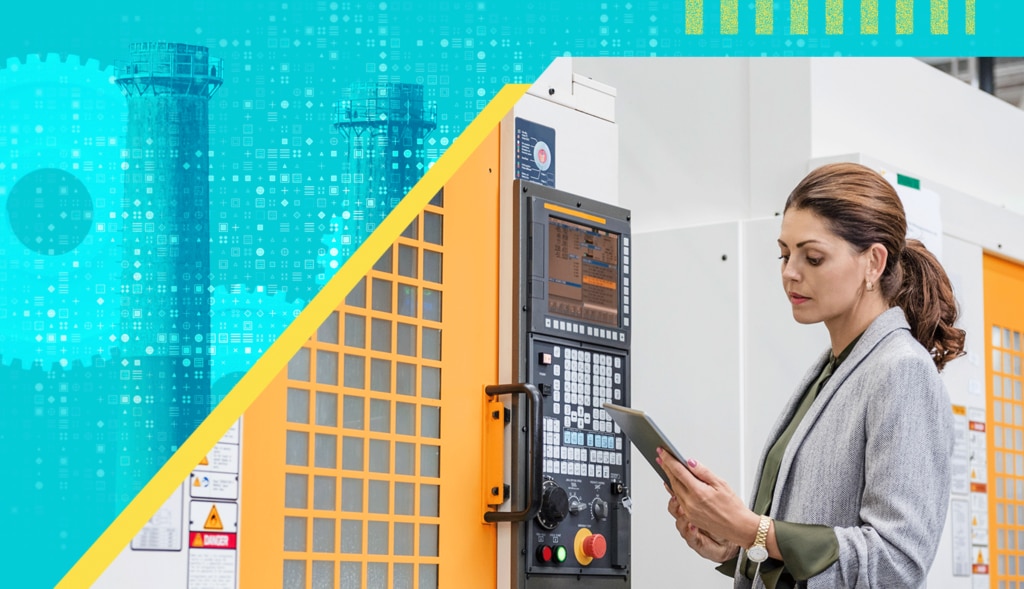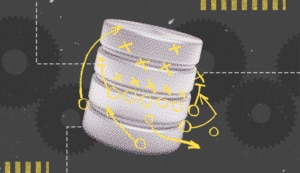The pandemic hit manufacturing hard, with the workforce, supply chains, and investment all taking heavy blows. The bounce-back has also been punishing on the sector, with severe global competition for materials, disrupted logistics, and workforce shortages, all exacerbated by the human and economic disaster of Ukraine.
Adaptability Takes The Lead
Manufacturers with advanced digital investments have been best placed to accommodate the turbulence of recent years. Those digitally advanced manufacturers are now focused on becoming adaptable as a safety net against future uncertainty – as IDC reports,
"manufacturing organizations that have been shifting their priorities from being efficient to being resilient have made their operations more flexible and agile." [1]
Manufacturing is Digitizing Internally For Efficiency and Resilience
The technologies enabling manufacturing adaptability are not new, but the need for flexibility has boosted their adoption. They include
Industrial Internet of Things (
IIoT) which allows components, machine tools, manufactured goods, and much more to be tracked and often managed in real-time, which is a foundational capability necessary to enable adaptable manufacturing.
The data from IIoT devices and manufacturing systems feed
advanced analytics and
machine learning systems, providing insights into what is going on throughout the manufacturing process and enabling problems to be anticipated and addressed before they happen. This is especially true when mitigations can be designed, modeled, and tested in software via a
digital twin.
Since few manufacturing projects are entirely greenfield, new IT investments in manufacturing usually need to work with existing plant and machinery. This requires integrations between the IT and the separate manufacturing-focused
Operational Technology (OT) ecosystem discussed in an
earlier post. This needs to be handled sensitively - IT/OT integrations are a source of concern to some in manufacturing, who fear the relative ubiquity and openness of mainstream IT may increase the levels of cybersecurity threat in the sector.
Network connectivity is the final critical element of digital manufacturing. High-speed interconnection enables manufacturing ecosystems to exchange data. When low-latency networking capabilities are added through public or private 5G or, in the future, Multi-access Edge Computing (
MEC), autonomous robots and, more broadly, autonomous things can also be enabled.
Manufacturing is Digitizing Externally For Growth
Manufacturers are digitizing their
ecosystems to drive efficiencies and to stay relevant to their markets. This impacts every facet of their ecosystem: exposing digital supply chains to suppliers to maintain consistency of supply, working more transparently with partners to drive operational efficiencies, and integrating ever more closely with customers for greater flexibility to customer needs. In the current turbulent environment, a primary focus is creating more robust supply chains.
IDC predicts that by the year's end, half of all manufacturing supply chains will be resilient, reducing disruption impacts by 10% and driving further transformation of supply chains.
In parallel, manufacturers are digitizing their
customer relationships to drive greater and deeper customer engagement, in what Gartner has called:
"a new digital business model where manufacturers can maintain a connection with the consumer past the sale of the product, by connecting more with the brand as well as with brand experts, other customers and advanced users." [2]
As well as strengthening customer engagement, B2C manufacturers plan to grow sales of digital services, enhancing their core products. In the automotive sector,
Stellantis (parent of the Jeep, Fiat, and Chrysler brands) anticipates $23B annual recurring revenues from in-car subscription services by 2030, while
General Motors expects a comparable $25B by the same date. B2B manufacturers, meanwhile, are seeking to monetize customer data—for example, while manufacturer
Schaeffler already uses industry 4.0 sensors to track the performance of its components, it now plans to take this a step further by
monetizing data on the performance of its partners' components. The vast data volumes now generated in manufacturing are expected to make this common in the near term – Gartner also
predicts within two years, half of the global heavy manufacturers will be monetizing their data.
The Manufacturing Challenge of Complexity
While Industry 4.0 and subsequent digital transformation have helped manufacturers survive and compete, it has significantly increased the complexity of manufacturing environments. These often include on-premises, hybrid IT, public clouds, and edge deployments and incorporate multiple technology integrations. Multiple management and monitoring solutions across multiple platforms are the norm, and achieving clear visibility into end-to-end performance is challenging.
For many manufacturers, the solution to this complexity is consolidating tools to deliver a more holistic understanding of their environment.
SolarWinds® Hybrid Cloud Observability is designed to help consolidate management and monitoring into a single observability platform. This provides full-stack visibility, automated analytics, and AIOps-powered intelligence across real-time and historical metrics, logs, and trace data. This solution helps integrate data from systems, networks, infrastructure, databases, applications, and edge environments, providing actionable insights that enable better and quicker business decision-making, improved performance and availability, and lower TCO.
At the same time, with complexity comes risk, and Manufacturing is intensely aware of cyber threats—IBM's annual
threat intelligence report highlighted Manufacturing as the most targeted sector in 2022. An effective security information and event management ('SIEM') solution is therefore essential for all manufacturers, and
SolarWinds® Security Event Manager, which combines fast deployment with quick-to-find threat detection, can be a great option.
Putting the Plan Into Action
Every manufacturer has a unique starting point, depending on how their environment has evolved and the scope and scale of their strategic plans. We recommend the following steps:
- Audit your full environment (network, applications, infrastructure, database, and security, across on-premises, hybrid, public cloud, and edge)
- Identify your priority investments where intelligent automation and observability can drive the maximum impact
- Map out an initial implementation plan
- Talk to SolarWinds about consolidating and simplifying your monitoring complexity to deliver your performance and efficiency goals.








